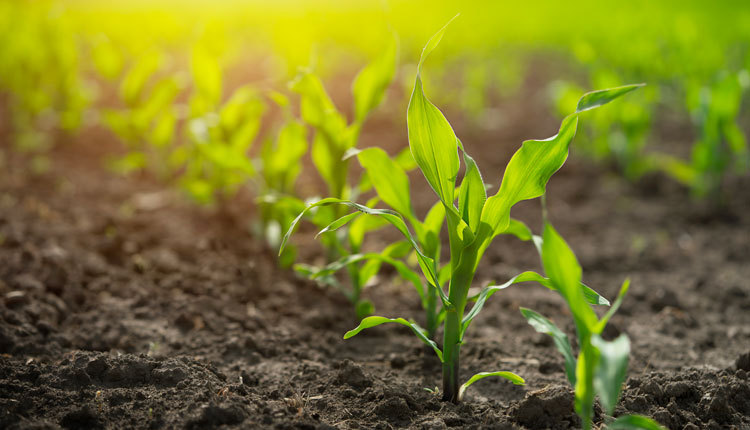Goeser is the director of nutritional research and innovation with Rock River Lab Inc., Watertown, Wis., and adjunct assistant professor, dairy science department, University of Wisconsin-Madison.

As the season rolls on, many baseball teams are recognizing mid-season adjustments are necessary to improve their chances for success. In baseball, success is defined by achieving the postseason and advancing.
Teams need to assess their current standing, strengths, and opportunities relative to others both in the division and the league. Trading players, bringing new talent up from the minor leagues, and returning players from the injured list are all options at mid-season to improve team performance.
As this article hits your mailbox, corn is in mid-season form, and I’ll argue that we can think like baseball team general managers to make mid-season adjustments that will, in turn, improve our chance for success. The success, in this case, is corn silage with improved yield and feeding value given the growing season.
I’ve been writing and speaking about corn silage extensively over the past year, to the point I wonder at times if I’m coming across like a song on repeat. Yet, in talking with agronomists and farmers from the East to West Coast, we’re learning by the month and refining our thought process in managing corn for silage or feedout.
Silage is a tricky beast
As Corey Geiger stated in the inaugural Herd It Here Podcast from Hoard’s Dairyman, corn silage is a tricky beast. In that episode, we talked through silage quality impact factors related to less digestible grain and starch. We’re seeing similar less digestible starch in dry ground or high-moisture corn grain as well, which we’ll discuss in future columns.
Staying on silage here, I’m expecting 2023 corn silage will continue to bear attributes like 2021 and 2022 crops thanks to improved plant health. However, we’re at the mid-season point and it may be time to make some adjustments to influence our crop toward the optimal end.
Midwest to East Coast
With corn tasseling or heading to tassel, the season has already had an impact upon fiber digestibility. As the University of Wisconsin-Madison’s Joe Lauer noted in a blog last year, growing seasons with a wetter first half tend to lag in fiber digestibility. It’s been my running understanding that corn is genetically imprinted for fiber digestibility around the V5 to V7 stage, relative to the growing environment at this stage.
We can’t control the growing environment, but we can take note of early season rainfall and heat units. Then we can make a few adjustments during the season to maintain the best stover and fiber quality possible.
Walk fields with your agronomist and talk about investing in fungicide applications to maintain plant health. We’ve observed an uptick in fiber digestibility the last year, which I think is partly attributable to improved plant health.
Take note of the tasseling date and then sit down with your calendar to circle the date range 40 to 60 days after the average tasseling date for your fields. Corn historically has been ready for silage around 45 days post tasseling; however, I’ve learned from Todd Schaumburg and other experienced agronomists that better plant health has widened this window out. More on that later. Start intensively monitoring corn with your agronomist during this 20-day window later in the season.
For our farmers on the West Coast, we’re dealing with a 180-degree shift in our growing conditions thanks to water being readily available. Over the past decade, California has been in severe drought with expensive water limiting irrigation. These drought shackles have been broken, and farmers have excellent water availability to irrigate in 2023. This will change our yield and quality in corn silage.
I’d have been laughed out of the room if I brought up high chopping corn out West in years past, but this discussion might be warranted now if we’re growing incredible corn taller than the chopper. Talk through harvest adjustments with your agronomist and nutritionist.
Speaking of nutritionists, Mike DeGroot and I were talking about other potential adjustments to make in 2023. He’s recommending farmers consider bulking up silage inventory in 2023, with uncertainty on the horizon in 2024, and I wholeheartedly agree.
Healthy corn is different
Schaumburg and I have been talking corn management more frequently as of late. For example, in the April/May 2023 Hay & Forage Grower Feed Analysis column, “Corn silage disconnects,” I detailed Schaumburg’s thoughts relating to a corn silage disconnect between whole-plant moisture and kernel maturity.
Over the past two seasons, we’ve seen green plants and wetter stalks right up to harvest. To make 65% moisture silage, we’re needing more mature and drier grain in the ears to balance out the wet stalk.
Greener stalks are good for yield and fiber digestibility! But silage is feeding differently with more mature and drier grain. Starch digestibility is down.
We can take note and be proactive with 2023 corn through kernel processing. Have a mid-season conversation with your harvesting crew about that topic. Benchmark your 2022 silage with a kernel processing score (KPS) and see what your team can do to raise the bar 5 to 10 units. Make sure your kernel processors are sharp and well-maintained. The goal for 2023 is 75% to 80% KPS when you feed out your silage.
A continued conversation
Bringing this mid-season discussion to a close, walk your fields with your advisers and talk about options on the table to improve your corn’s performance for silage. There’s easily $350,000 or more invested in silage for every 500 cows on feed by year-end. Make every effort during the season to optimize this six-figure investment.











